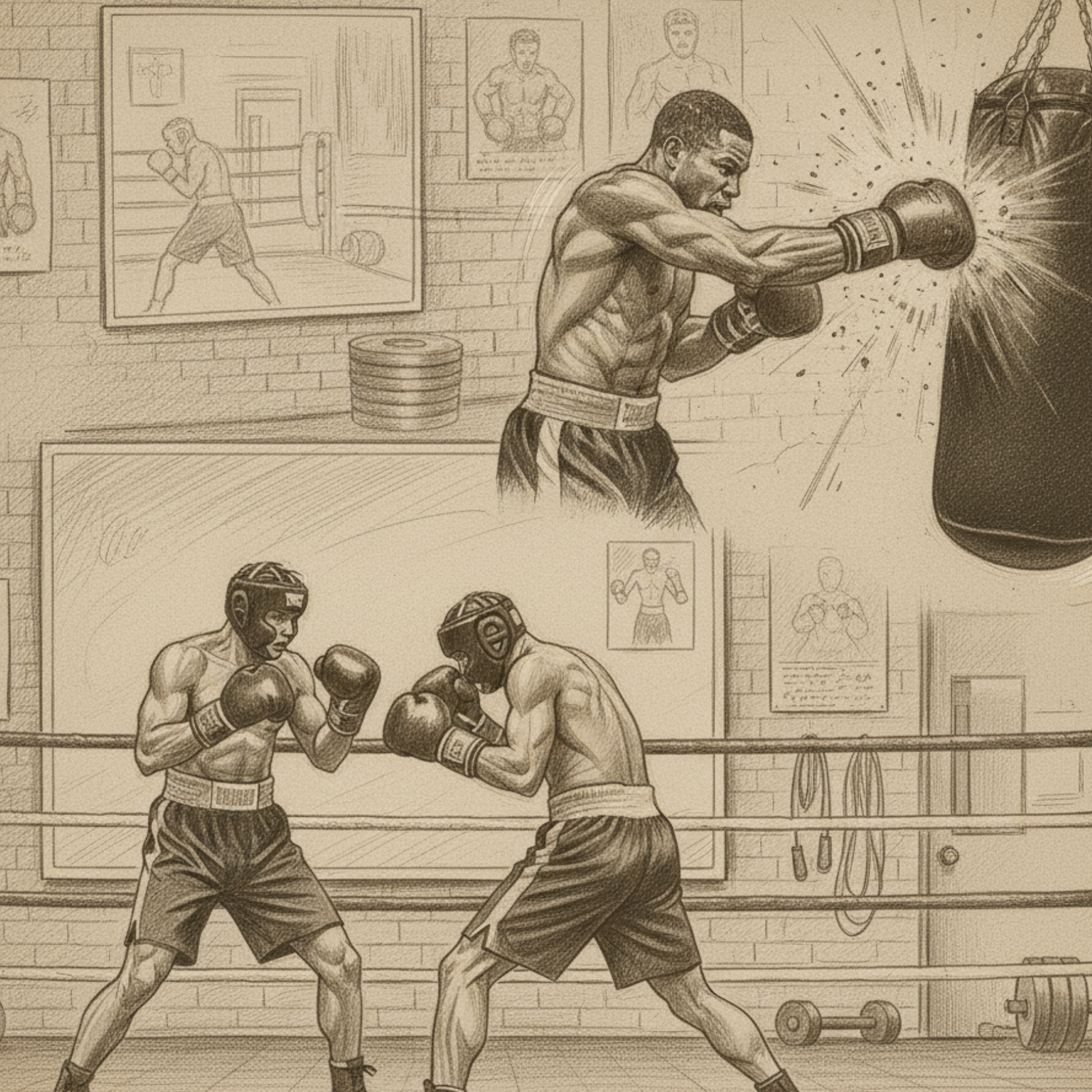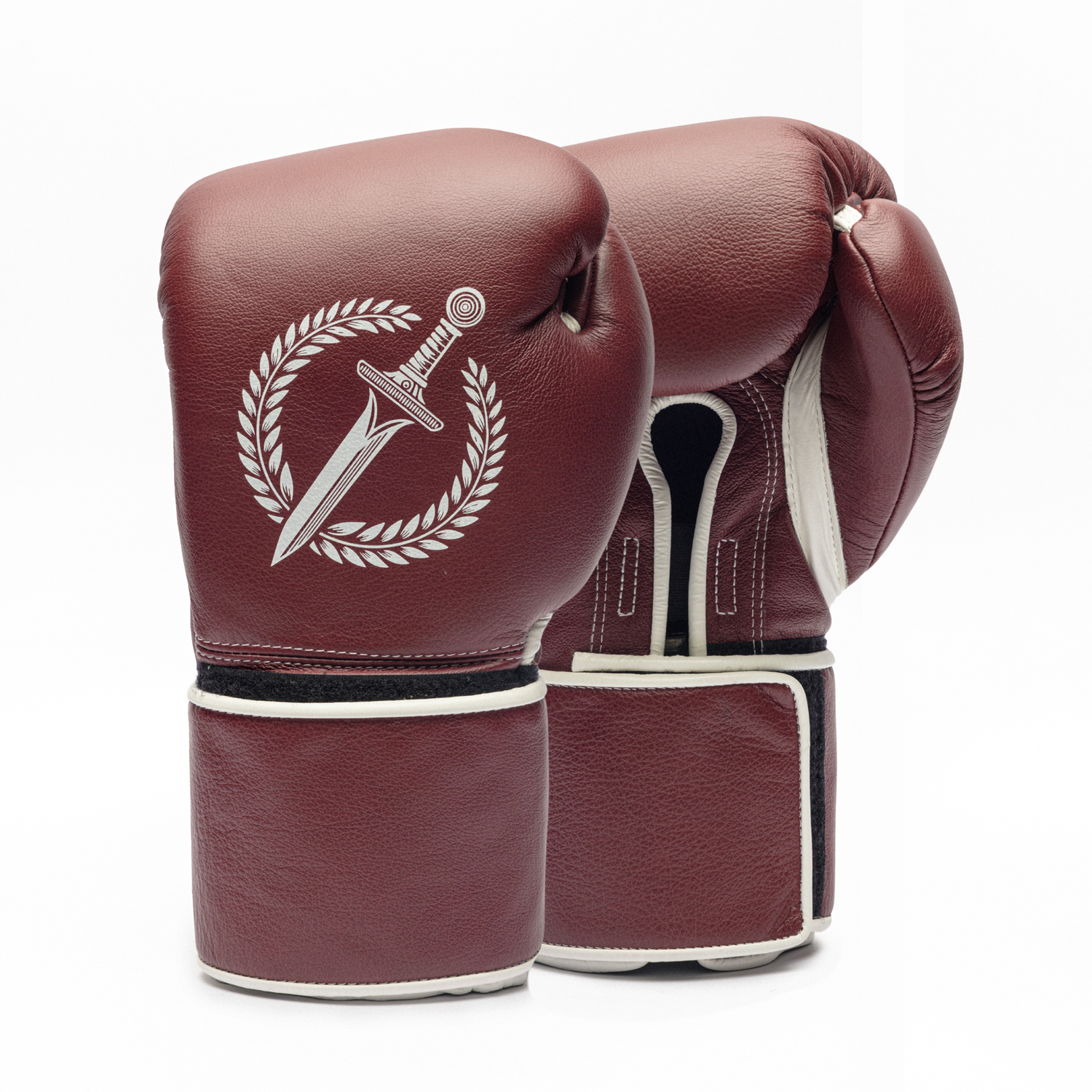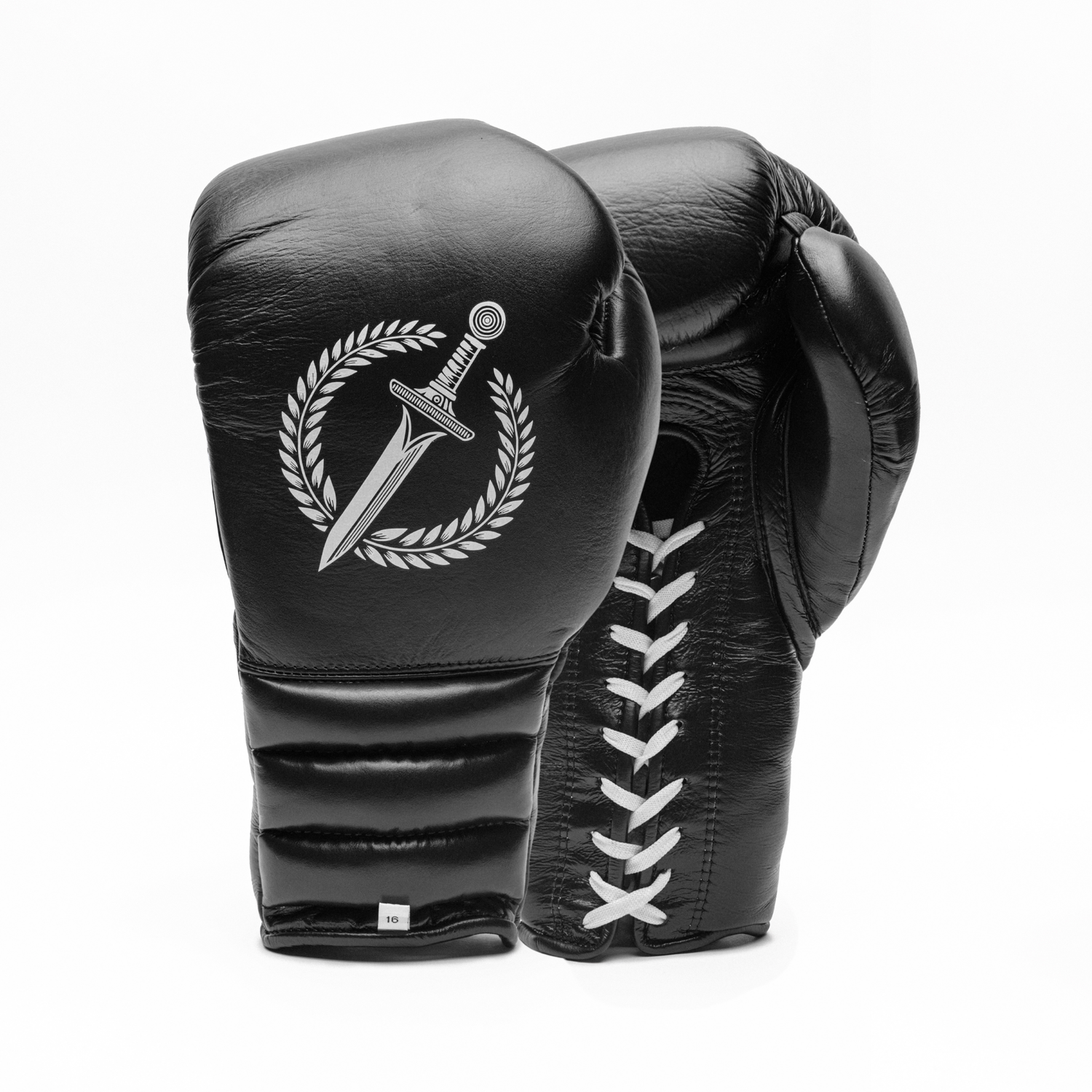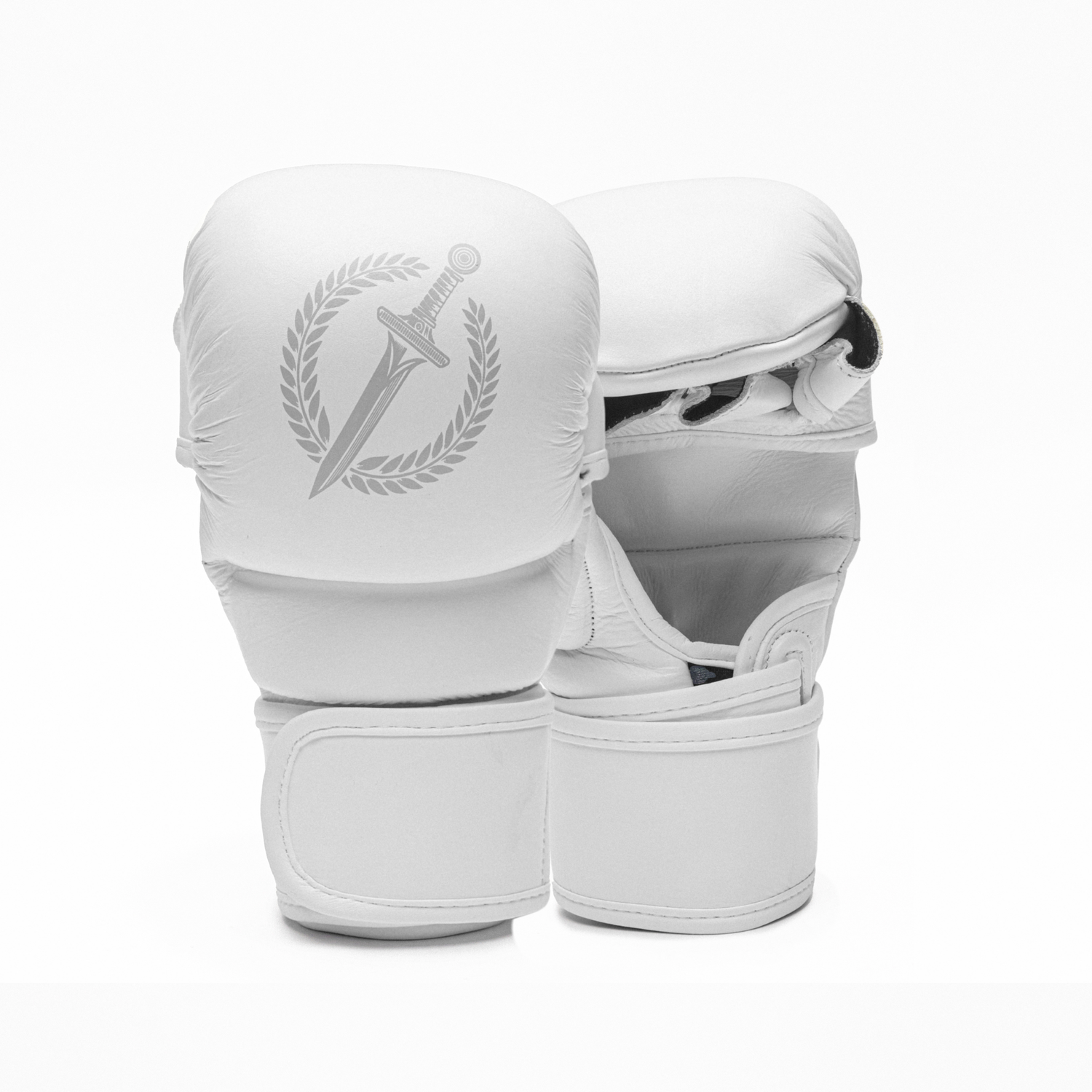A friend of mine once visited a gym out of town while on a business trip. After a few rounds of mitt work and heavy bag drills, he asked if he could jump into some sparring with the local fighters.
To his surprise, the head coach was visibly offended and replied: “I would never let my fighters spar with someone who isn’t wearing sparring gloves.”
If, like my friend, you’re not exactly sure what a sparring glove is or how it’s different from a regular training glove, this article is for you. Let’s break it down:

Sparring gloves are non-negotiable in some gyms for contact exercises. But what is a sparring glove anyways?
What are sparring gloves?
Sparring gloves are specifically made for live rounds with a partner. Their goal is protection first, both for your hands and especially for your teammate’s face. They may look exactly the same as a regular training glove, but once you slip them in your hands you notice the difference almost instantly. They feel soft, very cushioned and is often referred to by fighters as "pillow" gloves.
The main differences that transform a regular glove into a sparring glove are its size and padding:
-
Size: They almost always weigh 16oz or more, depending on your weight class. Most serious gyms don't allow any heavy sparring rounds to be done with low-weight gloves.
-
Padding: Sparring gloves feature softer, more shock-absorbent padding that reduces the impact of each punch, making them safer for repeated exchanges. The padding material is usually a blend of layered soft foam and high density EVA. This technology got popular with Japanese brands, and has since been incorporated around the globe.
💡 When to use and when NOT to use sparring gloves? Sparring gloves are perfect for contact-based drills like sparring rounds and controlled combat scenarios. However, they are not ideal for heavy bag or mitt work, mainly because they offer minimal punch feedback due to their softer padding. If you use them for this type of exercises you'll be defeating their purpose. The carefully engineered padding is design to protect your hand and your partner, not to absorb repeated force from the bag. Doing so will cause it to break down much faster.

Most sparring gloves use multi-layered foam padding like the one shown in the picture. This allows for a combination of different foam types to create a cushion that is very soft and shock absorbing.
What are training gloves?
Training gloves (also called all-purpose gloves) are designed to handle a wide variety of workouts: bag work, pad work, shadowboxing, and sometimes even light partner contact drills.
These gloves usually fall between 10oz and 16oz, depending on your body weight and training goals. They're typically lighter and built with a denser padding structure to withstand heavy impact from the bag without breaking down quickly and provide more punch feedback.
Note that 99% of gloves available in the market are training gloves, so chances are that yours is too.
💡 When to use and when not to use training gloves? Training gloves are great for all exercises - bag, mitts, partner drills and even light sparring. Their limitations are heavy sparring and pro-competition.

Training gloves, such as Gladius, offer versatility for different types of exercises, including light-moderate sparring.
Key differences at a glance
| Feature | Training Gloves | Sparring Gloves |
|---|---|---|
| Primary Use | Everything! Bag, mitts, solo drills and even light-contact sparring. |
Partner sparring/live work. |
| Padding | Denser, firmer. Offers more punch feedack. | Softer, more shock-absorbent. "Pillow-like". |
| Glove Weight | 10oz–16oz | 16oz or more (depending on weight) |
| Protection Focus | Your hands | You and your partner |
| Durability | High | Low (padding decays faster with use) |
Where do I find sparring gloves?
Training gloves are easy to find. Sparring gloves, not so much. True sparring gloves often need to be custom ordered or sourced from specialized brands known for their commitment to soft, protective "pillow-style" padding.
Your best move? Ask your head coach or experienced teammates what brands they trust for sparring. Fighters with more rounds under their belt will usually know exactly which models offer the right balance of protection, durability, and comfort for partner drills.
Why you would eventually need both
If you train for competition or plan to do heavy-sparring sessions, you’ll need both types of gloves in your arsenal. Using the wrong gloves for the wrong purpose can:
-
Hurt your sparring partners (if you use training gloves in sparring).
-
Ruin your sparring gloves (if you use them on the bag).
-
Lead to wrist, knuckle, or partner injuries over time.
In case you don't plan to spar heavy, a pair of regular training gloves will be enough. Just make sure you are not going full power against your partners while wearing it.

MMA gloves have a similar distinction with different names; only in this case, the sparring glove is also the most versatile.
Is the same distinction available for MMA gloves?
Yes, but with different names.
MMA gloves usually are differentiated into traditional MMA gloves and hybrid MMA gloves (safer for sparring).
-
Traditional MMA gloves: These are the gloves used in competition. They have a flatter profile to allow for better grip and easier grappling transitions, while also making strikes more impactful. That translates into less padding over the knuckles and a lower weight (typically 4oz).
- Hybrid MMA gloves: Hybrid gloves are built specifically with safety in mind. They have a rounded profile, higher weight (6-7oz) and thicker padding over the knuckles. While the extra padding makes grappling a bit harder, they offer far better protection for your training partner’s face, especially during striking and ground-and-pound. That’s why most fighters prefer hybrid gloves for sparring and training sessions.
The important difference vs. boxing gloves is that hybrid MMA gloves are also perfectly suited for mitts, bag work, and pad drills. Their padding is durable enough to handle impact without breaking down quickly, making them a more versatile option for all-around MMA training.
💡 What MMA gloves to choose if you want to spar? Hybrid gloves will offer much more protection vs. a traditional MMA glove. Grappling exchanges will be a little harder at first, but once you get used to it you won't notice the difference.
Are Gladius gloves safe for sparring?
Our boxing gloves are considered by experts as training gloves. Although our padding is on the soft-side of the industry, it still offers good punch feedback as a Mexican-made glove usually does. They are safe for light to moderate sparring sessions, but will be a bit too much for your partner's face if used in heavy sparring.
Our MMA Gloves are all hybrid models and safe for sparring. We do not sell traditional MMA gloves.

A lineup of Gladius Gladiator, Sailor and Empire. All safe for light-moderate sparring sessions.
Final Thoughts
Training and sparring gloves might look similar, but they serve two very different purposes. The smart fighter knows: your gloves aren’t just gear, they’re tools. Use them correctly, and they’ll keep you and your partners safe while sharpening your craft.





